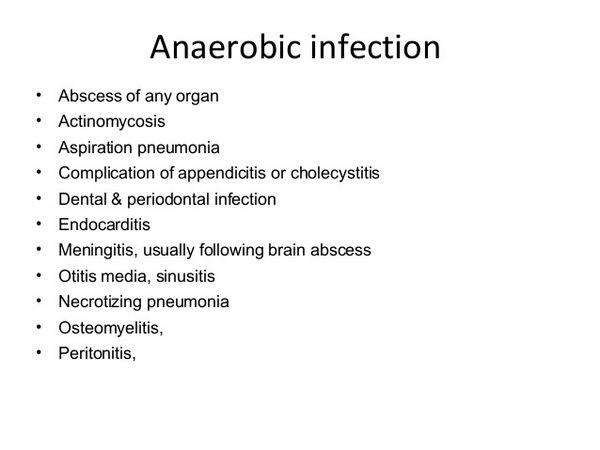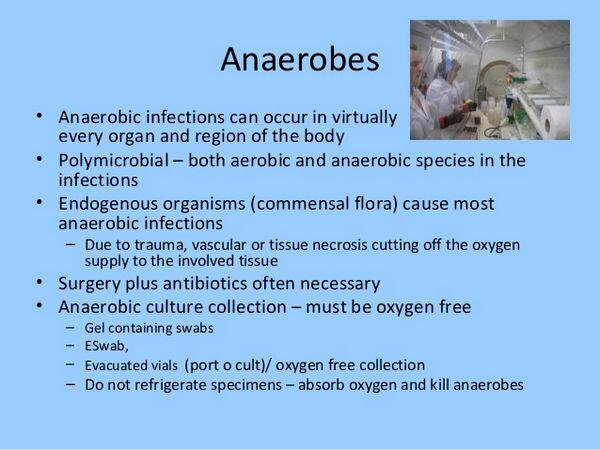Description of Medical Condition
Gangrene is local death of soft tissues due to disease or injury and is associated with loss of blood supply. Anaerobic and necrotizing infections may be associated with gas.

System(s) affected: Skin/Exocrine, Cardiovascular
Genetics: N/A
Incidence/Prevalence in USA: Rare
Predominant age: Any
Predominant sex: Male = Female

Medical Symptoms and Signs of Disease
- Local pain
- Foul odor
- Abnormally dark skin and tissues under skin (dark green to black)
- Crepitation (gas)
- Fever
- Rapid pulse
- Fulminant course leading to death without treatment
What Causes Disease?
- Local injury
- Superimposed infection (surface or deep; local or distant)
- Carcinoma of large intestine
- Hematologic malignancies
- Severe neutropenia, related or not related to chemotherapy
- Burns
- Liposuction
Risk Factors
- Poor blood supply (arteriosclerosis)
- Old age
- Trauma
- Diabetes mellitus
- Malnutrition
- Immune suppression
- Chickenpox
Diagnosis of Disease
Differential Diagnosis
- Deep infections with muscle involvement
- Gas gangrene
- Gas gangrene resulting from soft tissue trauma with multiple aerobic and anaerobic organisms; synergistic necrotizing sepsis, synergistic necrotizing cellulitis; clostridial myositis; clostridial myonecrosis
- Abdominal wall gas gangrene; postoperative clostridial sepsis of the abdominal wall; clostridial myonecrosis of the abdominal wall
- Nontraumatic, metastatic, clostridial myonecrosis: metastatic clostridial myositis; metastatic gas gangrene; gas gangrene without a visible wound: spontaneous gas gangrene
- Uterine clostridial infections
- Gas gangrene of the heart
- Gas gangrene of the brain
- Streptococcal myositis: anaerobic streptococcal myonecrosis; anaerobic streptococcal myositis
- Infected vascular gas gangrene; non-clostridial gas gangrene; non-clostridial myositis
- Superficial infections — with or without abscess
- Hemolytic streptococcal gangrene
- Acute, infectious staphylococcal gangrene
- Anaerobic cellulitis; crepitant phlegmon; clostridial cellulitis
Onecrotizing fasciitis due to multiple aerobic and anaerobic organisms; synergistic gangrene; non-clostridial anaerobic cellulitis; anaerobic cutaneous gangrene; perineal phlegmon; Fournier gangrene. (Note: If there is extension to the tissues of the abdominal wall below the deep fascia, such as the anterior sheath of the rectus muscle, perineal phlegmon or Fournier gangrene is a synergistic necrotizing sepsis rather than just a necrotizing fasciitis. These are similar infections but are in different locations.)
Onecrotizing fasciitis due to group A streptococcus (there may be very rapid extension to structures deep to the deep fascia)
- Panophthalmitis
- Simple clostridial contamination of wounds
- Infiltration or injection or aspiration of gas into wounds
- Wounds with gas not produced by bacteria
- Injection of gas into wounds
- Therapy (e.g., hydrogen peroxide)
- Pranksters’jokes
- Malingerers
- Psychiatric problems
- Aspiration and dissemination of air into wounds by muscular activity
- Subcutaneous emphysema related to air leak syndrome or trauma
- Gas in tissues after industrial accidents
- Magnesiogenous pneumogranuloma
- Gas in tissues after injections of chemicals
- Injection of drugs
- Accidental injection of a foreign agent, such as benzene
- Gas in tissues after laparoscopic examination and treatment
Laboratory
- With severe gangrene, studies will reveal anemia and leukocytosis
- Gram smears for many possible organisms
- Daily serum creatine kinase determinations
Drugs that may alter lab results: Antibiotics prior to culture
Disorders that may alter lab results: N/A
Pathological Findings
- Necrosis of tissues with foul odor
- Sometimes, gas in tissues
- Microorganisms
Special Tests
Cultures and sensitivity tests for microorganisms reported to produce gas in human tissues: Gram-positive anaerobes: Cocci — Peptostreptococcus (anaerobic Streptococcus) (usually with group A Streptococcus [Streptococcus pyogenes, beta-hemolytic Streptococcus] or Staphylococcus aureus) Gram-positive anaerobes: Bacilli — Clostridium pertringens and other clostridia Gram-negative aerobes: Bacilli — Escherichia coli. Klebsiella pneumoniae, Enterobacter species, Proteus species (all usually in mixed infections)
Gram-negative anaerobes: Bacilli — Bacteroides fragilis (usually with other gram-negative bacilli)
Imaging
Plain radiographs, gas in tissues; with MRI, edema
Diagnostic Procedures
IMMEDIATE SURGICAL INTERVENTION with longitudinal incisions of skin, superficial fascia, deep fascia, and muscles to look for necrotic tissue and/or foreign bodies and with removal of necrotic tissue or foreign bodies. Daily repetition if indicated. Repeated physical examinations for another, similar, focal infection.
Treatment (Medical Therapy)
Appropriate Health Care
Hospital inpatient
General Measures
- Infectious disease consultation if available
- Intravenous fluids with glucose, electrolytes, blood, vitamins
- Daily CBC and electrolytes in acute phase
- Prophylaxis for tetanus
- Hyperbaric oxygen: unclear therapeutic value; no delay of surgical intervention for hyperbaric oxygen therapy
Surgical Measures
- Surgical intervention for diagnosis and debridement ot necrotic tissues; possibly daily
- Re-operation if possibility of spreading or unrecognized necrosis and/or foreign bodies (with abnormal daily CPK determination)
- Surgical repair for loss of skin and subcutaneous tissues
Activity
Bedrest
Diet
By mouth, as tolerated
Patient Education
N/A
Medications (Drugs, Medicines)
Drug(s) of Choice
Initially broad spectrum, antibiotic regimen; then specific antibiotic regime as determined by stained smears, cultures, and sensitivity tests with particular reference to the sensitivities of the hospital where the patient is being treated (although anaerobic organisms are difficult to culture and identify). Dosage will vary according to clinical circumstances; refer to manufacturer’s literature and suggestions of infectious disease consultant, mportant: don’t delay treatment if smear, cultures and tests negative.
Gram stain and presumptive organism
- Gram stain Presumed organism + cocci Streptococcus + cocci Staph. aureus + bacilli Clostridium spp – bacilli Bacteroides spp – bacilli Coliforms – Gram-positive cocci: penicillin G, nafcillin (Unipen).
- clindamycin (Cleocin), metronidazole (Flagyl), or cephalosporins
- Gram-positive bacilli: penicillin G, clindamycin.
Metronidazole or cephalosporins
- Gram-negative bacilli (Bacteroides): clindamycin, metronidazole, cefoxitin (Mefoxin) [many B. fragilis are resistant], ticarcillin (ticar) or mezlocillin (Mezlin)
- Gram-negative bacilli (Coliforms): gentamicin
(Garamycin), tobramycin (Nebcin), amikacin (Amikin).
Cephalosporins, ampicillin, mezlocillin, or ticarcillin
Intravenous calcium gluconate if extensive fat necrosis
Contraindications: Sensitivity to drugs
Precautions:
- Sedatives and analgesics (both before and after exploratory and therapeutic operations) may make recognition of spreading gangrene more difficult
- Repeated gram smears, culture and sensitivity tests for the best antibiotic(s)
Significant possible interactions: See manufacturer’s profile of each drug.
Alternative Drugs
As above
Patient Monitoring
- Diligence required to recognize spreading gangrene
- Monitor effective blood levels of prescribed antibiotics
- Electrolytes
- Nutrition
- CPK determinations daily for myonecrosis
- Progress notes in charts daily or as often as every 4 hours
Prevention / Avoidance
- Avoidance of trauma
- Good care of skin
- Avoidance of tight orthopedic casts
Possible Complications
- Tissue and functional losses
- Amputation
- Death
Expected Course / Prognosis
- Fair if early diagnosis and treatment, and if gangrene arrested at an early stage
- Fatal without treatment and possibly with treatment
- Fair if large intestine disease is recognized and removed immediately or if hematologic malignancy is recognized and treated immediately
Miscellaneous
Associated Conditions
- Diabetes mellitus with impaired blood flow
- Altered immunocompetence: Depressed immuno-competence may require an alteration of treatment, especially with tumor treatments
Age-Related Factors
Pediatric: N/A
Geriatric: Diseases of the aged with debility and poor blood supply
Pregnancy
Treatment as for nonpregnant, but consider the pregnancy
International Classification of Diseases
785.4 Gangrene
040.0 Gas gangrene
136.9 Unspecified infectious and parasitic diseases
682.9 Cellulitis and abscess at unspecified site
See Also
Tetanus
Other Notes
Group A Streptococcus: “flesh eating bacterium”
Abbreviations
CBC = complete blood count
MRI = magnetic resonance imaging
CPK = serum creatinine phosphokinase


